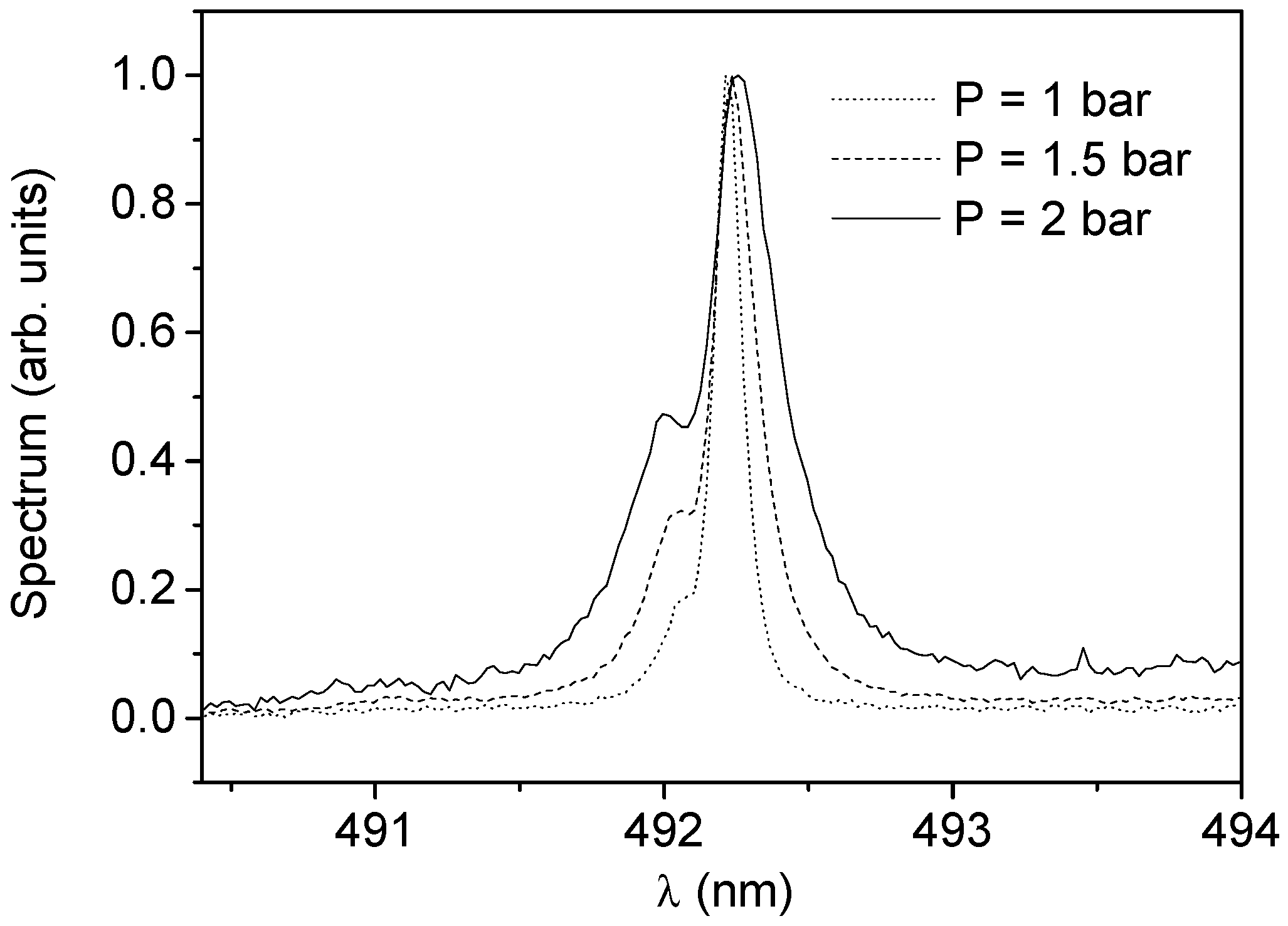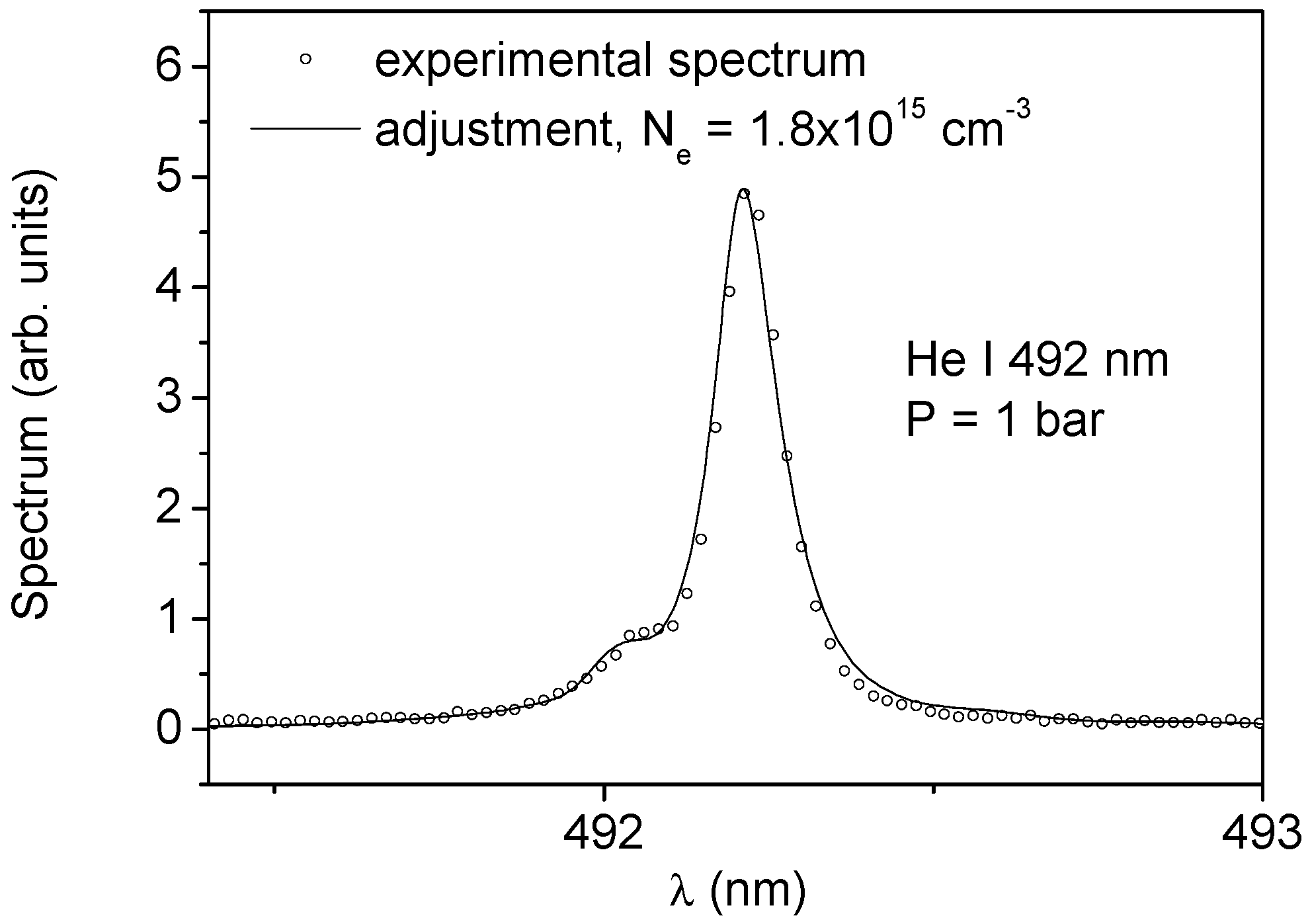Line Shape Modeling for the Diagnostic of the Electron Density in a Corona Discharge
Abstract
:1. Introduction
2. Presentation of the Experiment
3. An Analysis of the Helium 492 nm Line Observed at 300 K
4. Conclusions
Author Contributions
Conflicts of Interest
References
- Rosato, J.; Bonifaci, N.; Li, Z.; Stamm, R. A spectroscopic diagnostic of the electron density in a corona discharge. J. Phys. Conf. Ser. 2017, 810, 012057. [Google Scholar] [CrossRef]
- Li, Z.-L.; Bonifaci, N.; Aitken, F.; Denat, A.; von Haeften, K.; Atrazhev, V.M.; Shakhatov, V.A. Spectroscopic investigation of liquid helium excited by a corona discharge: Evidence for bubbles and “red satellites”. Eur. Phys. J. Appl. Phys. 2009, 47, 2821. [Google Scholar] [CrossRef]
- Ali, A.W.; Griem, H.R. Theory of Resonance Broadening of Spectral Lines by Atom-Atom Impacts. Phys. Rev. 1965, 140, A1044–A1049, reprinted in Phys. Rev. 1966, 144, 366. [Google Scholar] [CrossRef]
- Rosato, J.; Marandet, Y.; Capes, H.; Ferri, S.; Mossé, C.; Godbert-Mouret, L.; Koubiti, M.; Stamm, R. Stark broadening of hydrogen lines in low-density magnetized plasmas. Phys. Rev. E 2009, 79, 046408. [Google Scholar] [CrossRef] [PubMed]
- Griem, H.R.; Baranger, M.; Kolb, A.C.; Oertel, G. Stark Broadening of Neutral Helium Lines in a Plasma. Phys. Rev. 1962, 125, 177–195. [Google Scholar] [CrossRef]


© 2017 by the authors. Licensee MDPI, Basel, Switzerland. This article is an open access article distributed under the terms and conditions of the Creative Commons Attribution (CC BY) license (http://creativecommons.org/licenses/by/4.0/).
Share and Cite
Rosato, J.; Bonifaci, N.; Li, Z.; Stamm, R. Line Shape Modeling for the Diagnostic of the Electron Density in a Corona Discharge. Atoms 2017, 5, 35. https://doi.org/10.3390/atoms5040035
Rosato J, Bonifaci N, Li Z, Stamm R. Line Shape Modeling for the Diagnostic of the Electron Density in a Corona Discharge. Atoms. 2017; 5(4):35. https://doi.org/10.3390/atoms5040035
Chicago/Turabian StyleRosato, Joël, Nelly Bonifaci, Zhiling Li, and Roland Stamm. 2017. "Line Shape Modeling for the Diagnostic of the Electron Density in a Corona Discharge" Atoms 5, no. 4: 35. https://doi.org/10.3390/atoms5040035





